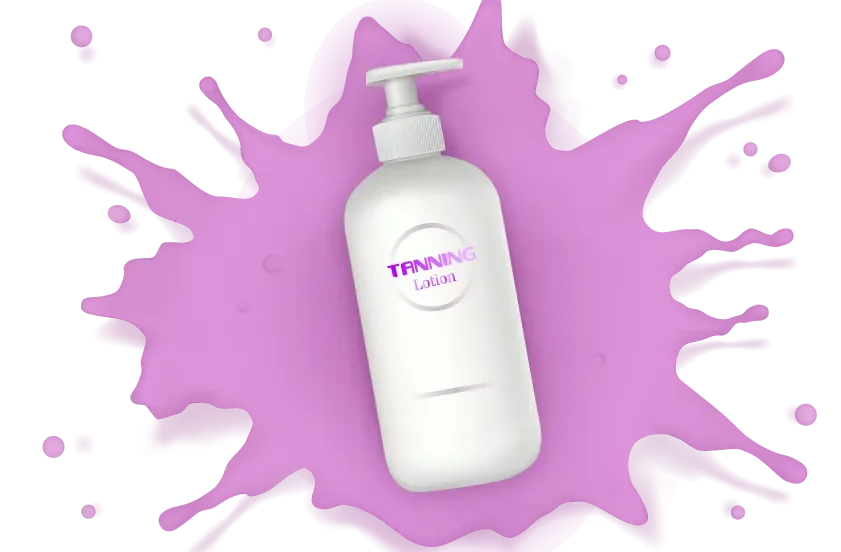Tanning Physics – Why It’s So Important to Know What You’re Doing
The sun is the primary source of ultraviolet (UV) radiation, which is the main cause of skin cancer. However, there are other sources of UV radiation, such as tanning beds before and after and sunlamps. The UV radiation from these sources can damage your skin just as much as direct sunlight. Tanning lotion offers an alternative to UV rays’ damaging effects by artificially darkening the skin.
That tanning lotion does not protect against sunburns or other harmful effects of direct sunlight. Users should always be aware that tanning lotion gives them a false sense of security and should always wear sunscreen when exposed to any UV radiation. The best way to avoid damaging your skin is to avoid exposing it.
The Importance of Understanding the tanning Physics
Tanning Physics is important for several reasons. First, it gives you a better understanding of the process and how your skin reacts to the sun’s rays. Second, understanding the physics will help you make an informed decision about which tanning method is best for your body and skin types. Finally, knowing what’s going on with your body during a session can help prevent any unwanted side effects or damage down the road.
The information in this article can be used to decide which tanning method is right for you by considering both the benefits and risks associated with each one.
Tanning lotions are cosmetic products used to darken the skin by accelerating the tanning process. The use of tanning lotions is becoming more popular as people become more aware of UV exposure’s dangers.
Tanning lotions work by absorbing into the skin and releasing a pigment that absorbs UV radiation, which then stimulates melanin production in the skin. This means that it does not protect against sunburns or other types of skin damage.
Where Did Tanning Come From?
You’ve probably heard that tanning is harmful to your skin. The truth is, however, that tanning is a normal and natural response to ultraviolet (UV) radiation exposure that your body uses as a protective mechanism. It even helps keep you cool when you’re exposed to high temperatures!
The first time anyone ever saw someone with a tanned complexion was thanks to the ancient Egyptians. The word “tan” comes from the Latin word “denarius,” which means “of leather,” because their leatherwork was so durable and impervious to decay, it seemed like it had been coated in some protective substance. By studying mummies’ remains today, we know they were probably using olive oil or other vegetable oils on their bodies before going outside because they didn’t want any damage done while hunting or harvesting crops in the sun.
The Chemistry of Melanin and Melanocytes.
Melanin is a pigment that gives colour to skin, hair and eyes. It’s produced by melanocytes located in the basal layer of your epidermis. These cells produce it at an incredible rate of 17-18 milligrams per square centimetre of skin surface area daily! The production process starts with tyrosine being converted into DOPA (dihydroxyphenylalanine). When this happens, you gain access to a wide range of colours:
- Brown, when exposed to ultraviolet light
- Black when exposed to visible light (like your monitor)
When we think of tanning lotions, we often think of the smell. However, there are many other factors that can affect how well a person tans. One factor is skin type. There are three different types of skin: dry, oily and normal. The next factor is age. Younger people have more elastic skin, which makes it easier for them to tan than older people
who have thinner and less elastic skin, which makes it harder for them to tan. Lastly, time spent in the sun also affects how well a person tans. If a person spends too much time in the sun, they can burn, and if they spend too little time in the sun, they won’t get as much colour as someone who spends more time in the sun.
The Main Types of Skin Pigment.
The main types of skin pigment are melanin, carotenoids and haemoglobin. Melanin is what gives your skin its dark colour. It is produced by specialized cells called melanocytes in a process that takes time to complete. How quickly your tan depends on how much melanin your body produces and how sensitive it is to UV radiation. Carotenoids are pigments found in plants that protect them from damage by the sun’s UV rays; they also help to produce vitamin A in animals like humans who eat them.
Haemoglobin helps transport oxygen through the bloodstream so your body can use it as fuel for cells like those found in skin tissue; because these cells require more oxygen than other cells do, they need higher levels of haemoglobin than most other tissues do as well—this explains why our palms get darker when we spend too much time outdoors without sunscreen!

Why Is Tanning Such a Big Deal?
There are a few reasons why tanning is such a big deal. The first is that it’s a sign of good health and youthfulness. If you have a tan, it means that your skin has been exposed to sunlight and absorbed the vitamin D it contains—essential for maintaining healthy bones, muscle tone, and metabolism. Studies have shown that people who live in places where there’s plenty of suns tend to live longer than those who don’t!
The other reason tanning is important is that it helps maintain elasticity in the skin. Elasticity refers to how well your body bounces back from injuries or stressors like working out; having taut muscles makes them more difficult for bad guys (and gals) like wrinkles to settle in on them.”
Making Sense Of It All When You’re New.
When you’re new to the world of tanning, it can be easy to feel overwhelmed by the complexity of the process. The physics and chemistry involved in your body’s ability to tan are complicated and often misunderstood. However, once you understand how everything works together, it becomes much easier to navigate through this journey with confidence.
Understanding The Tanning Physics
While it would be tempting to pick up a book on the subject before getting started on your tanning regime, we strongly recommend against this approach; when first starting out, understanding all that goes into your body’s natural response is best done with help from an expert who has been trained in this field (and has access to equipment). Your health is too important for taking risks by skimming through books on your own!
You’ll know what you are doing when it comes to tanning with this info.
You’ll know what you are doing when it comes to tanning with this info.
In this article, you will learn the physics behind tanning, which includes:
- The process of melanin production and its relationship to UV light exposure
- How burning occurs and its effects on your skin
- What SPF is, why it’s important, what it measures and how it should be used
Tanning lotion is a topical preparation that contains a darkening agent and is applied to the skin to produce a tan.
There are many different types of tanning lotions. One type of lotion, called “self-tanning” or “sunless” lotion, contains a darkening agent that produces an artificial tan without exposure to ultraviolet radiation. Best Self-tanning lotion products can be applied by using a mitt, sprayer, or sponge.
The most common active ingredient in self-tanning products is dihydroxyacetone (DHA). DHA reacts with dead cells on the surface of the skin and produces brown pigments that give the appearance of a natural tan.




